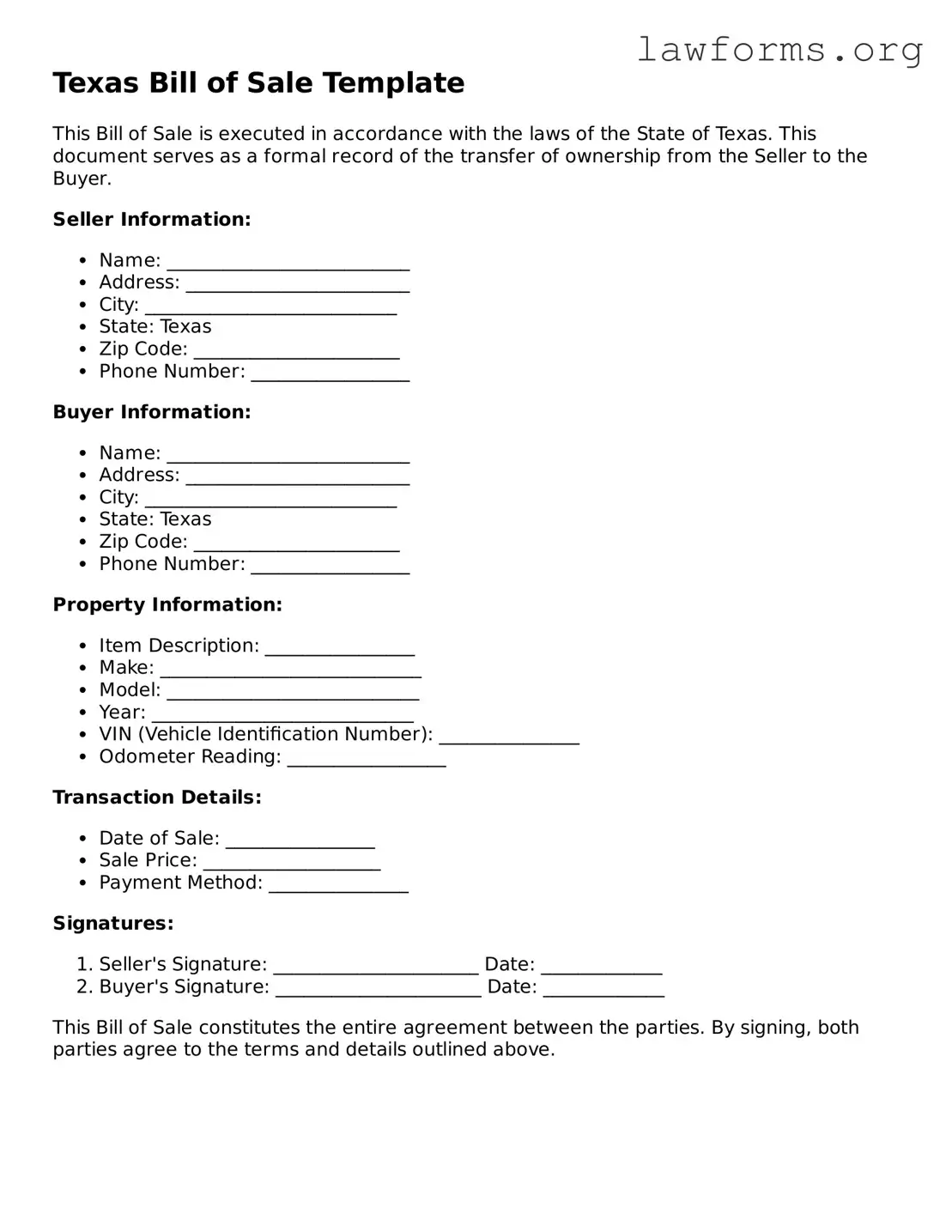Attorney-Approved Bill of Sale Template for the State of Texas
The Texas Bill of Sale is a legal document used to transfer ownership of personal property from one person to another. This form provides essential details about the transaction, including the buyer, seller, and item being sold. Understanding how to fill out this form correctly is crucial for a smooth transfer of ownership.
Ready to get started? Fill out the form by clicking the button below!
Customize Document Online
